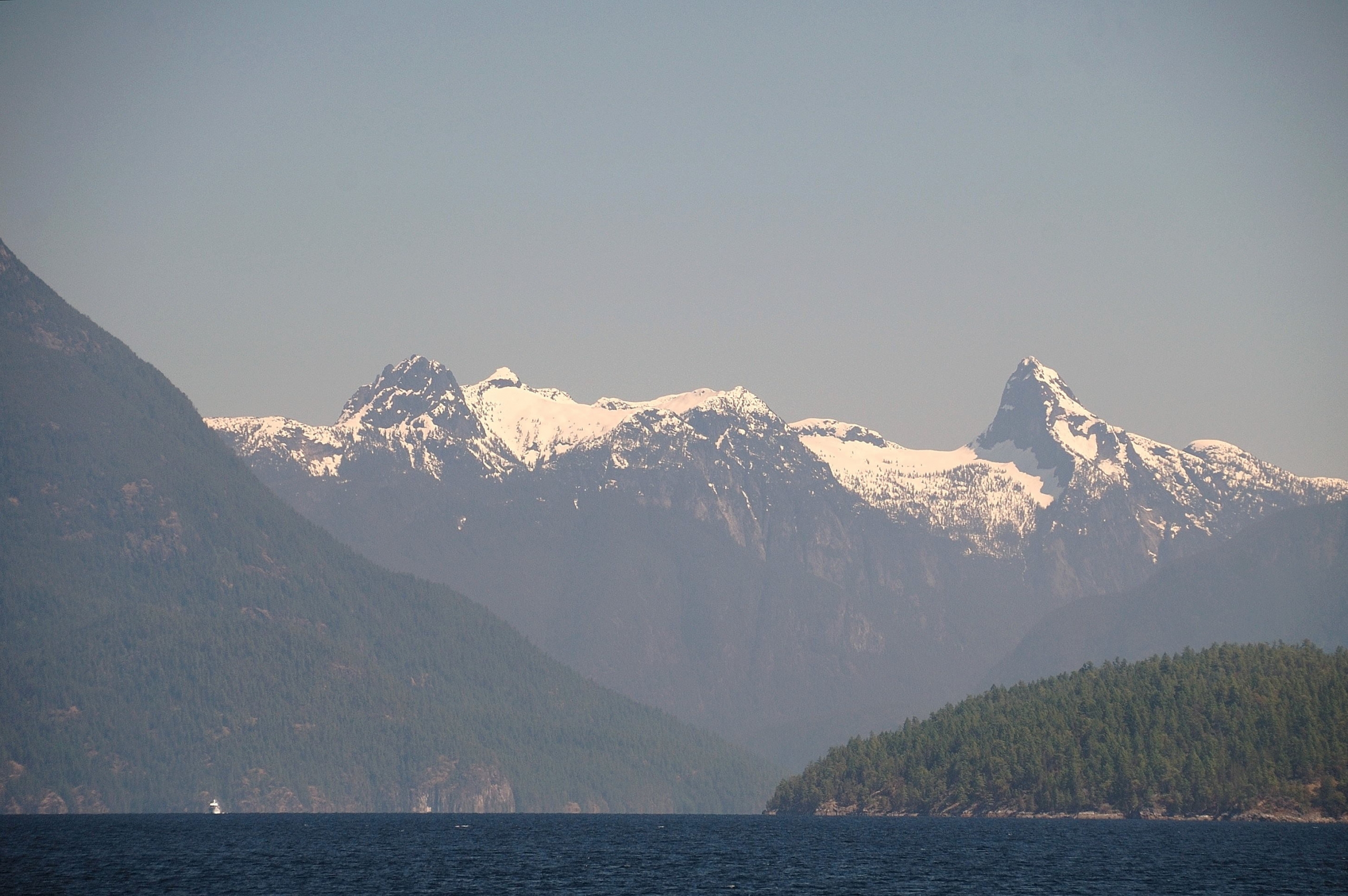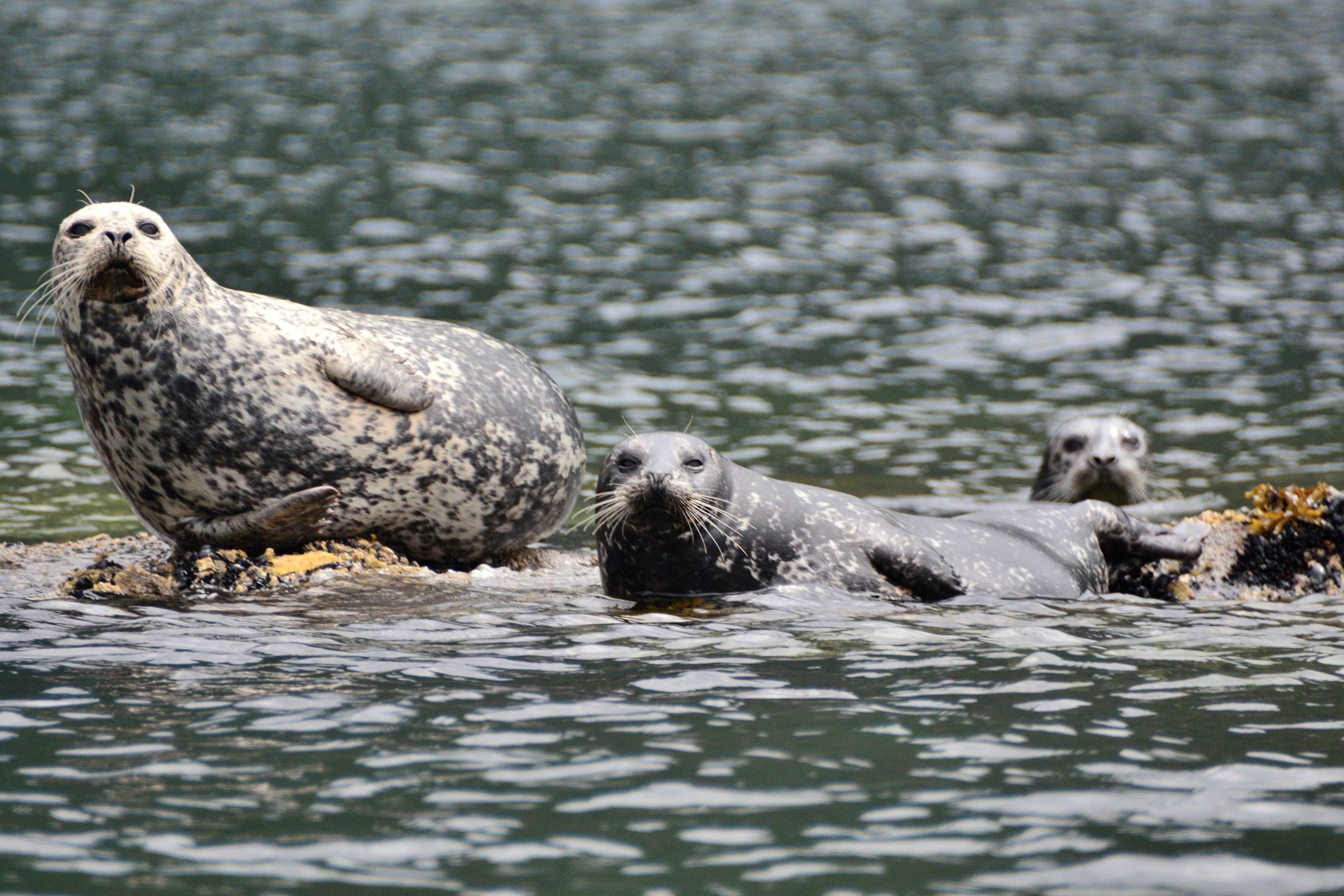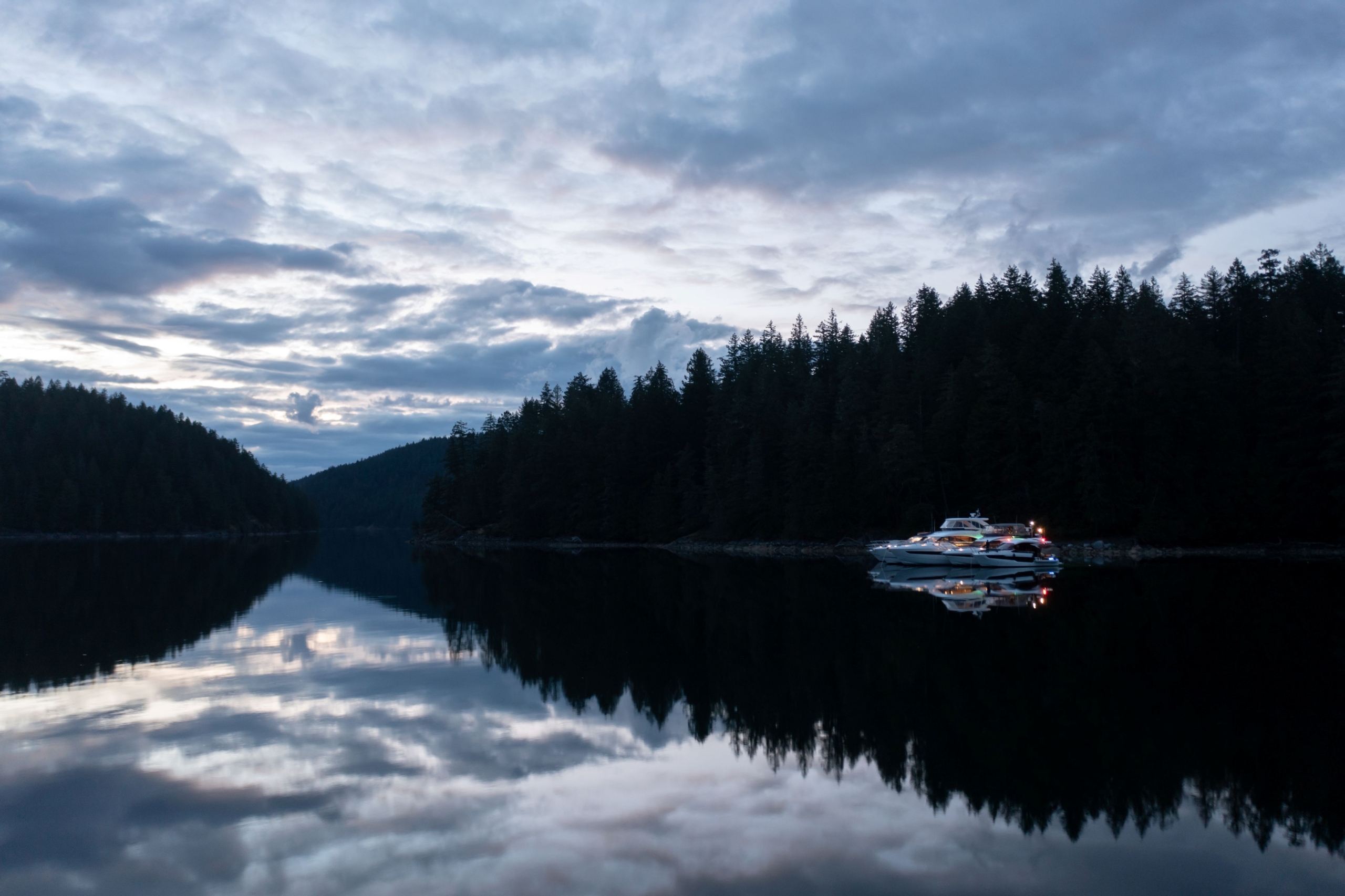Desolation Sound Marine Provincial Park – Anything but Desolate
5th September 2025
With its warm summer waters, protected anchorages, and breathtaking scenery, Desolation Sound Marine Provincial Park is one of British Columbia’s most sought-after boating destinations. Located about 144 km north of Vancouver, this 8,449-hectare park offers over 37 miles of shoreline to explore. While Captain George Vancouver famously gave it its gloomy name in 1792, boaters today know it’s anything but desolate.
From June through September, thousands of cruisers head here for calm anchorages, scenic paddling routes, and easy access to shore hikes. If you’re planning a trip, here are some of the most popular anchorages to put on your chart and some onshore activities to make the most of your trip.

Desolation Sound – Massive glaciers carved deep into the rocks creating the Coastal Mountains.
Grace Harbour
Tucked into Gifford Peninsula in Malaspina Inlet, Grace Harbour is a long and narrow anchorage, completely protected from all winds and open sea. A short hike from the north end of the harbour leads to a quiet freshwater beaver lake, with abandoned logging equipment along the way that hints at the area’s history.
Tenedos Bay
Sheltered by Bold Head, Tenedos Bay is a favourite for its easy access to Unwin Lake, a warm freshwater swimming spot just a short walk from shore. Anchor inside the island on the northern shore or at the head of the bay. Many paddlers portage their kayaks to explore the lake’s peaceful waters.
Prideaux Haven
Often called the crown jewel of Desolation Sound, Prideaux Haven is a maze of islands, coves, and narrow channels perfect for exploring by dinghy or kayak. Melanie Cove and Laura Cove are the most popular anchoring spots, though the entire area offers good holding and spectacular views.
Roffey Island
Surrounded by reefs and small islets, Roffey Island offers a scenic and tranquil stop. The cove east of the island is best entered from the north, with Mount Addenbroke towering in the background. Sunsets here are particularly memorable.
.

Desolation Sound – Far from desolate.
Onshore Activities to Enjoy
- Hiking: Take the easy trail from Tenedos Bay to Unwin Lake for a refreshing freshwater swim or a peaceful nature break. The hike is short and family-friendly, perfect after a day on the water.
- Swimming: The marine park is famous for its warm summer waters, ideal for swimming and snorkeling. If you prefer freshwater, Unwin Lake is a perfect alternative. Remember to respect the environment and avoid soaps or detergents in these beautiful natural waters.
- Kayaking: Desolation Sound is a world-class paddling destination. Whether you bring your own kayak or rent one nearby, there are countless coves and sheltered waters to explore at your own pace. Guided tours also operate out of nearby towns like Powell River and Lund.
- Fishing: Both saltwater and freshwater fishing opportunities abound here. Anglers can try for salmon, rockfish, oysters, prawns, and more. Always check local regulations, including Rockfish Conservation Areas and shellfish advisories, and make sure you have the proper licences.
- Scuba Diving & Snorkeling: With excellent water clarity, diving and snorkeling can be rewarding. Note that there are no dive shops or facilities within the park, so divers should be fully self-sufficient.

From calm, protected anchorages to warm waters and endless natural beauty, Desolation Sound Marine Provincial Park offers an unforgettable experience for boaters. Whether you’re anchoring in a quiet cove, paddling between islands, or hiking to a freshwater lake, this is a place where you can truly disconnect and soak in the best of BC’s coastal wilderness.
Looking to buy or sell a vessel? At Freedom Marine, we offer a selection of new and pre-owned Powerboats and Sailing Yachts. Contact us today to chat with a team member about your boating needs!


